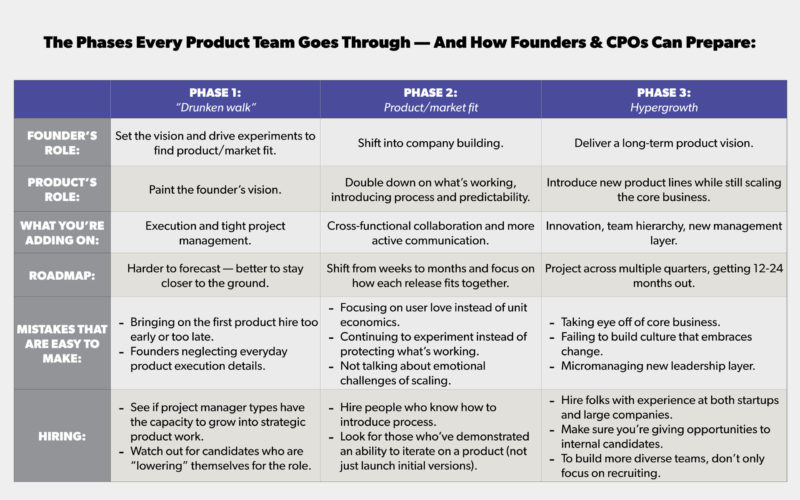The ability to iterate on something until it works is underrated.
…a PM who’s taken a product from version two to eight at a smaller startup,
vs.
someone who’s worked at scale, but only shipped initial versions and then moved on.
Origen: The Phases Product Teams Go Through, From Product/Market Fit to Hypergrowth | First Round Review
To help founders and product leaders get a better sense of those challenges — and the team they’ll need in place to solve them — Singhal shares the phases he believes a product org goes through as a startup matures. (Though they’re distinct from one another, he notes that companies don’t move through them overnight. “They require months or even years or rewiring, with the old adage of ‘What got you here isn’t what gets you there’ serving as your guiding light,” he says.)
-
Phase 1: “Drunken walk.” The company’s goal is to experiment as much as possible to find product/market fit. Product is tasked with painting the founder’s vision, and is working as more of a service or project management function.
-
Phase 2: Product/market fit. It’s time to double down on what’s working. As founders get more busy scaling the company, product’s role is to own collaboration with other teams and drive communication while predictably delivering releases to improve the product.
-
Phase 3: Hypergrowth. This stage is about innovating while scaling the existing product. The product team needs to articulate the strategic roadmap, translating the mission and long-term vision of the company across multiple quarters. This requires a blend of introducing new products and supporting existing successful ones, while starting to add a new layer of team leadership that can make decisions on their own.

-
Phase 4: Scale. Company becomes market leader (think FAANG). “Inside the building” problems stack up, focus shifts to sustaining growth and the innovator’s dilemma becomes most acute.
Hypergrowth is about scaling the core business and expanding your offerings simultaneously. Accomplishing both is insanely challenging. And it’s exponentially more difficult to pull it off amidst a sea of new employees, customers and increased expectations.
